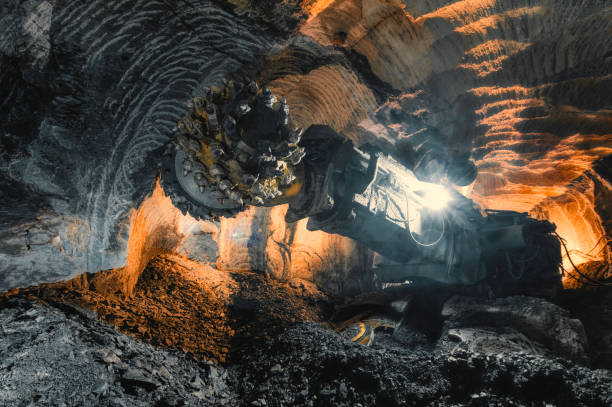Mining lies at the heart of modern civilization. From the copper in our electronics to the gold adorning our jewelry, countless items we rely on daily originate deep beneath the Earth’s surface. Underground mining, a core method of resource extraction, plays a critical role in producing the materials that power industries and economies worldwide.
How Underground Mining Works
At its core, underground mining involves accessing mineral deposits that lie far below the surface. The process encompasses several critical stages:
- Exploration: Geologists evaluate a site’s potential by studying rock formations and conducting tests to identify viable mineral deposits.
- Development: Once exploration confirms resource availability, infrastructure like mine shafts, tunnels, and ventilation systems is constructed to access and support the area.
- Production: This stage involves extracting the minerals using techniques such as room-and-pillar mining, longwall mining, or blast mining, depending on the deposit’s characteristics.
- Reclamation: After the resources are exhausted, mining companies rehabilitate the land to reduce environmental impacts and restore it for future use.
Minerals Commonly Mined Underground
Underground mining is used to extract a diverse range of materials, vital for various industries. Some commonly sought-after minerals and materials include:
- Precious Metals: Gold, silver, platinum.
- Base Metals: Copper, zinc, lead, nickel.
- Gemstones: Diamonds, rubies.
- Industrial Minerals: Salt, potash, gypsum.
- Energy Resources: Coal, uranium.
Each material serves a crucial purpose, whether in manufacturing, energy production, jewelry, or construction.
Environmental and Safety Considerations
Though indispensable, underground mining is not without challenges. Concerns about environmental impact and worker safety are central to the industry today.
- Environmental Impact: The environmental footprint of underground mining can include habitat disruption, water contamination, and air pollution from dust or emissions. To counteract these challenges, many companies are adopting strict regulations and sustainability practices to mitigate their impact.
- Safety Challenges: Mining at great depths inherently involves risks, such as cave-ins, gas leaks, and equipment malfunctions. However, advancements in safety gear, automation, and monitoring systems have substantially reduced accident rates.
The Future of Underground Mining
The mining industry is undergoing significant transformation due to technological innovations. Automation, artificial intelligence (AI), and remote-controlled machinery are now paving the way for more efficient and safer mining operations. Additionally, sustainability is becoming a focal point, with industries adopting greener practices such as waste reduction, renewable energy, and land restoration.
The concept of “deep-sea mining” is also gaining traction, presenting a potential frontier for extracting minerals from the ocean floor while reducing reliance on terrestrial resources.
Why Underground Mining Matters
Underground mining is indispensable for meeting global resource demands. It provides the raw materials essential for technology, infrastructure, energy, and much more. Every gadget, vehicle, building, and technological advancement relies, in some way, on materials brought to the surface through mining.
Types of Underground Mining Tools and Equipment
Underground mining relies on specialized tools and equipment designed to operate in challenging and confined environments. Some of the common types of tools and equipment used in underground mining include:
- Drills: Used for creating holes to insert explosives for blasting or for direct extraction of minerals. Rock drills and drill jumbos are commonly employed for these tasks.
- Loaders and Haul Trucks: Essential for transporting ore, waste material, and concrete, these vehicles, including the concrete trailer, are built to navigate narrow tunnels and withstand heavy loads.
- Roof Bolters: These machines help stabilize mine roofs by inserting bolts into the rock, ensuring safety for miners working below.
- Continuous Miners: Used for cutting and extracting material in medium to large-scale mining operations, continuous miners increase efficiency by eliminating the need for drilling and blasting.
- Shuttle Cars: These electrically powered vehicles transport mined ore from the continuous miner to a conveyor or other hauling system.
- Ventilation Fans: Proper airflow is critical underground; large fans ensure the removal of hazardous gases and the supply of fresh air to miners.
- Personal Protective Equipment (PPE): Helmets, gloves, safety glasses, and respirators are vital for miner safety, protecting them against hazards like falling debris and toxic gases.
Each piece of equipment plays a crucial role in ensuring productive and safe underground mining operations, adapting to the unique needs of each mining site.
Conclusion
Underground mining showcases human ingenuity, with a rich history and exciting future. As society depends on mined resources, innovation, safety, and sustainability are key to ensuring mining benefits future generations.

